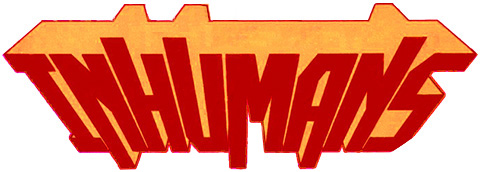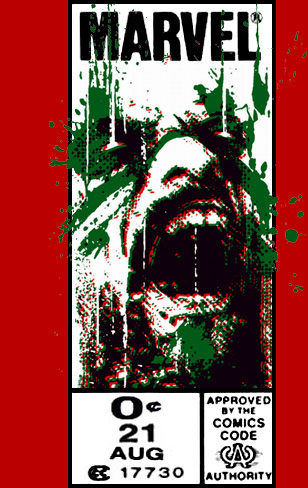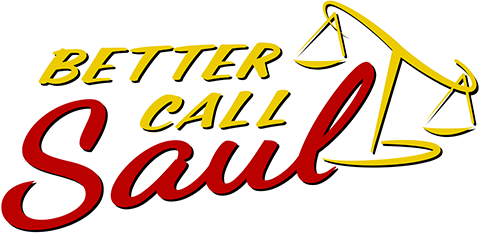

Stan Lee, Jack Kirby, [Doug Moench, Paul Jenkins, Jae Lee, Warren Ellis, Gerardo Zaffino, John Byrne, Ann Nocenti, Joe Simon,] and Scott Buck, 2017
So, as of the point I have reached in the Marvel Cinematic Universe—i.e., late 2017—the Inhumans have been kicking around in Agents of S.H.I.E.L.D. for several seasons, but really just as a stand-in for mutants, since I guess the rights to the X‑Men’s corner of the Marvel Universe belong to a different studio. As I keep saying when I write about the S.H.I.E.L.D. show, the Inhumans we meet are “random new ones instead of Crystal and Karnak and all a’ them”. And now suddenly I get to the next title on my list, expecting a show featuring all these random new Inhumans, and instead it’s Crystal and Karnak and all a’ them!
The Inhumans are a pretty fucked-up concept. You’ve got a closed society hidden away in the “great refuge” of Attilan, inhabited by an offshoot of humanity whose development was accelerated by the militaristic aliens known as the Kree. All of these “Inhumans” have the capacity to be transformed by the mist that emerges from “terrigen crystals”, for good or for ill. A “Genetic Council” attempts to maximize the odds that such transformations will be useful to Attilan by decreeing who may reproduce with whom, but still, the changes wrought by terrigenesis are just as likely to be pointless or even detrimental as they are to be beneficial. Find yourself unlucky when you emerge from the mists, and it’s off to the slums with you—though even in that case, you’re better off than the Inhumans’ bioengineered “Alpha Primitives”, who spend their lives underground tending to the machines that keep Attilan running. As for the aspects of society that don’t revolve around DNA—fighting wars and such—Attilan is ruled by an absolute monarch, Black Bolt, with only his own family members as deputies and advisors: Gorgon the goat-man, Triton the fish-man, and a handful of others. And for decades this royal family was treated as just another superhero team! When they met up with the Avengers and Fantastic Four, there was a lot of “hail fellow well met” and not a lot of criticism of the fact that their society was founded on eugenics, despotism, and slavery.
The Inhumans debuted in 1965 in the middle of Stan Lee and Jack Kirby’s famed Fantastic Four run, and they go to show the extent to which these guys were working on the fly. About a year earlier, they had pitted the FF against the infelicitously named Frightful Four. As the Frightful Four were meant to be a dark reflection of the title team, they needed a woman as a parallel to the Invisible Girl, but established female villains were in short supply. So Stan and Jack came up with “Madam Medusa”, whose powers were to have total control over her long red hair and whose background was a mystery (i.e., “we’ll fill it in once we come up with something”). A few months later, Jack presented Stan with the initial design for another baddie, Gorgon, and Stan replied that Gorgon should come from a whole society of similar chimeras, so Jack should whip up a few. The result was the Inhuman royal family, which in retrospect we can take as one of Jack Kirby’s many attempts to build a new pantheon along the lines of his reinvention of Asgard—see also the New Gods, the Eternals, etc. In fact, it was a little too close to Asgard: with the exception of the Loki figure, Maximus the Mad, they seemed more heroic than villainous. So Gorgon was turned from an actual bad guy into a misunderstood adversary, on the trail of… Madam Medusa, a fugitive from their secret city of Attilan! Bang, Medusa’s mysterious past filled in—and this new group connected up with “‘Attilan,’ island of the gods” from Captain America Comics #1 back in 1941! But even with all these pieces clicking into place, I doubt the Inhumans would have had much staying power had Stan and Jack not decided to give Medusa a little sister.
In Fantastic Four #45, the teenage Johnny Storm, miffed about his longtime love interest Dorrie Evans having other plans when he calls her up for a date, goes for a walk and ends up wandering into a slum scheduled for demolition, where he randomly finds an orange-haired teenage girl in a simple white dress sitting on a concrete block. “Wow!” he thinks. “I must be seeing things! What’s a vision like that doing in a deserted neighborhood! She almost doesn’t even look real—sort of like something out of a fairy tale! I hate to be disloyal—but she makes Dorrie Evans seem like a boy!” But she runs away when she sees him, and when Johnny calls out that he just wants to talk, she cries, “No! I can’t! I mustn’t! If ‘they’ learn that I was seen by anyone—!” Johnny replies, “A gal with your looks oughtta be seen by everyone!”, to which the gal in question responds by miraculously setting her surroundings on fire. But Johnny Storm is the Human Torch, and absorbs the flames. “You have hidden powers, too!” gasps the astonished girl. “Then you must be one of us! Why didn’t you say so??” Johnny, deciding that “I’d better play it cool till I find out what she’s talkin’ about!”, replies, “Sure I’m one of you! That’s what I’ve been tryin’ to tell you!” The girl replies, “Oh, how wonderful! My name is Crystal!! What is yours?” Johnny answers, “I’m the Human Torch! But my friends call me Johnny!” And a beaming Crystal says, “I would like to be—your friend!”
And that’s that. From this point on, the FF had their Romeo and Juliet story, as Johnny cares about nothing but being with Crystal, and Crystal cares about nothing but being with Johnny. But the two are almost immediately separated, with Maximus surrounding Attilan with an impenetrable “Negative Zone” barrier; it would be over a year, real time, before they were reunited—twenty percent of the running time of the Marvel Universe up to that point. On one mission, Johnny mopes that “for all I know, I’ll never see Crystal again!” and his sister Sue points out, “Johnny Storm! You’ve barely met her! You hardly know her!” But the story is clearly on Team Love At First Sight, as Reed Richards interjects, “Sue, when a man thinks he’s in love, nobody can tell him he’s not!”, and Johnny thinks, “That’s the first time he ever called me a man!” The eventual reunion is actually kind of anticlimactic, as it comes in the middle of a crisis and everyone’s distracted, but Crystal ends up joining the FF while Sue is busy tending to the newborn Franklin Richards, so she and Johnny finally get to spend some appreciable time together. Anyway—these stories were from before my time, but I did read them during my prime comic collecting days thanks to the anthologies I found at the Canyon Hills Library, and I’ve always loved Crystal. Why? It’s certainly not because of the sophisticated storytelling on offer in these issues—the storytelling here could hardly be more primitive. It really boils down to “Yore reel purdy! I wuv oo!” “OMG ILU2!!” And it’s not because of anything done with the character later. An unhappy marriage to Quicksilver, a cheap affair with a random real estate salesman, a stint on the Avengers in which her main role is to play the good girl in a love triangle involving Sersi and the Black Knight of all people… chopping her magnificent hair off and becoming some sort of badass operative… none of that explains why I had a poster of Crystal in my first apartment back in the ’90s. (That’s what today’s corner box is from.) It’s not even because of her looks: Johnny Storm’s protestations to the contrary, Jack Kirby drew Crystal as the same broad-faced Rhineland milkmaid he always drew. I think it’s basically just that while I haven’t succumbed to an all-consuming-crush-for-no-reason since I was nineteen, I had a lot of them before that—like, from age five onward—and Crystal represents the fantasy that those all-consuming feelings might be returned in equal measure. Plus a healthy dash of “exotic princess wants to know about this Earth thing you call ‘kissing’”.
Jack Kirby grew frustrated about being viewed as merely an artist and not as a plotter and character creator, and deciding that it was time for him to write a title himself, he selected the Inhumans as his subject. Kirby’s solo take on the Inhumans co-headlined a new volume of Amazing Adventures that launched in 1970, but then Kirby jumped ship to DC and the Inhumans lost their spot in the Marvel publishing lineup. In 1975 they got a book all their own, but it only lasted twelve issues. They spent a decade making spotty guest appearances; Ann Nocenti wrote a graphic novel in 1988 about a clash between the Genetic Council and Medusa over her unapproved pregnancy; they spent another decade making spotty guest appearances. But in 1998, Marvel, emerging from bankruptcy, farmed out four of its secondary properties to a studio headed by Joe Quesada to see whether deviating from the Marvel house style might attract some readers. This was the Marvel Knights initiative. Long term, the biggest success of Marvel Knights was that it got the ball rolling in turning the Black Panther into an A‑lister. But at the time, the attempt by Paul Jenkins and Jae Lee to relaunch an Inhumans comic as a Vertigo-style prestige series got just as much press, or more. Issue #2 of the Marvel Knights Inhumans, rolling out a new generation of non-royal Inhumans, earned particular notice, with two of its featured characters going on to star in their own Inhumans series starting in 2003. Then along came the MCU, and with it, the pressure to make the comics match what viewers were seeing in the theaters and on their TVs. If in the MCU, Inhumans were playing the part of mutants—regular people transformed into superhumans, not eccentric geniuses who, deliberately or inadvertently, were responsible for developing their own powers—then on the off chance that some of those MCU fans wandered into a comics shop, there should probably be some titles roughly matching up with what they’d seen! So a terrigen cloud was released on Earth, triggering transformations among those who, quite unsuspectingly, were carrying around some Inhuman DNA. The X‑books were shuffled into the background for a bit and filling their place were substitutes like Uncanny Inhumans and All-New Inhumans and some limited series to flesh out the Inhumans’ corner of the Marvel Universe. One of these was Karnak.


 Ayn Rand’s version of Objectivism tended to focus on the
supposed virtue of selfishness, but Steve Ditko was much more
concerned with setting forth the case for merciless, black-and-white
morality.
With his creator-owned character Mr. A (see right), on whom the
Question was based, Ditko took “black and white” even more
literally.
Alan Moore took the Question (and, by extension, Mr. A),
based Rorschach on them, and took a deep dive into the psychological
and philosophical underpinnings of these characters.
As I have written, I don’t know if any literary work I’ve
ever encountered has shown one human being’s understanding of
another the way that
Ayn Rand’s version of Objectivism tended to focus on the
supposed virtue of selfishness, but Steve Ditko was much more
concerned with setting forth the case for merciless, black-and-white
morality.
With his creator-owned character Mr. A (see right), on whom the
Question was based, Ditko took “black and white” even more
literally.
Alan Moore took the Question (and, by extension, Mr. A),
based Rorschach on them, and took a deep dive into the psychological
and philosophical underpinnings of these characters.
As I have written, I don’t know if any literary work I’ve
ever encountered has shown one human being’s understanding of
another the way that 



